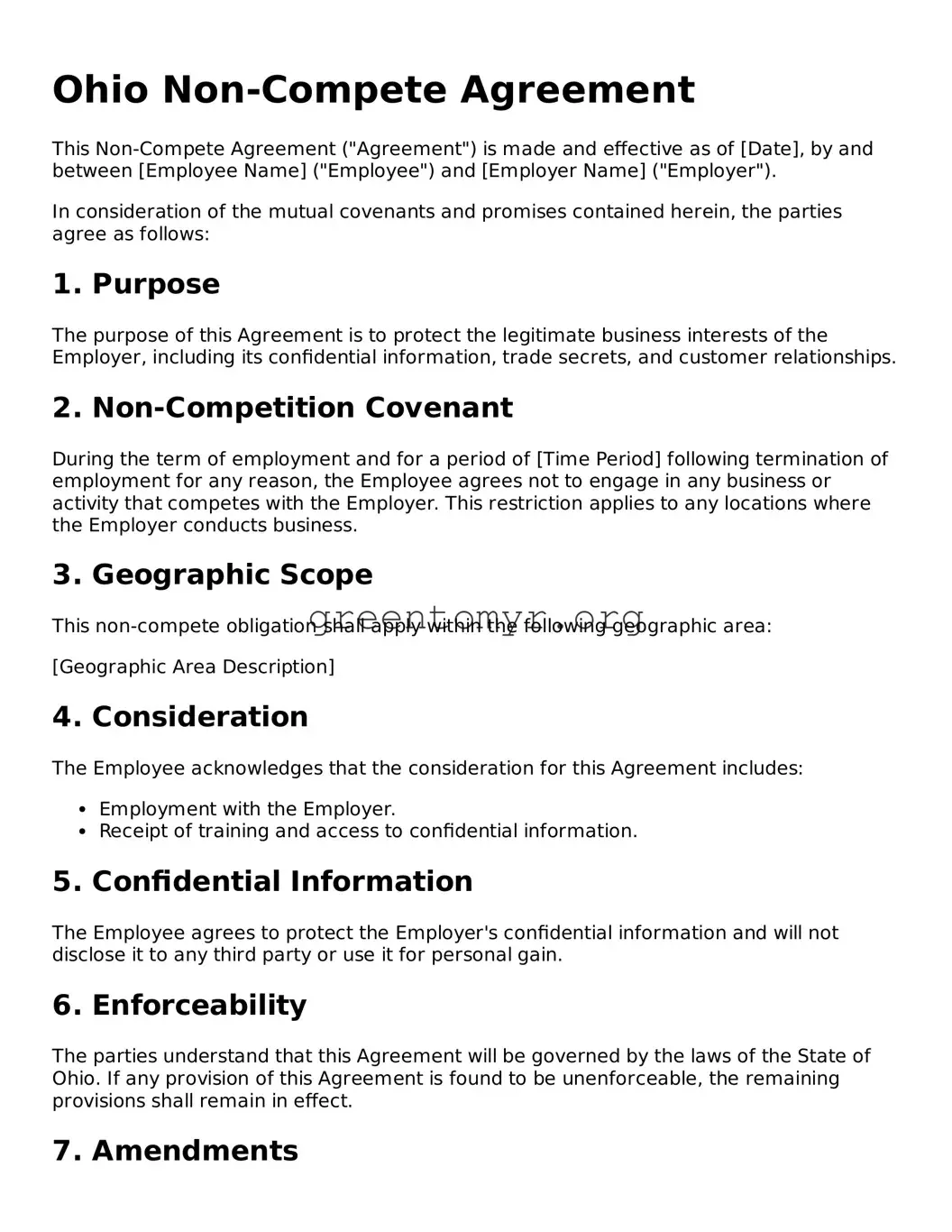Ohio Non-Compete Agreement
This Non-Compete Agreement ("Agreement") is made and effective as of [Date], by and between [Employee Name] ("Employee") and [Employer Name] ("Employer").
In consideration of the mutual covenants and promises contained herein, the parties agree as follows:
1. Purpose
The purpose of this Agreement is to protect the legitimate business interests of the Employer, including its confidential information, trade secrets, and customer relationships.
2. Non-Competition Covenant
During the term of employment and for a period of [Time Period] following termination of employment for any reason, the Employee agrees not to engage in any business or activity that competes with the Employer. This restriction applies to any locations where the Employer conducts business.
3. Geographic Scope
This non-compete obligation shall apply within the following geographic area:
[Geographic Area Description]
4. Consideration
The Employee acknowledges that the consideration for this Agreement includes:
- Employment with the Employer.
- Receipt of training and access to confidential information.
5. Confidential Information
The Employee agrees to protect the Employer's confidential information and will not disclose it to any third party or use it for personal gain.
6. Enforceability
The parties understand that this Agreement will be governed by the laws of the State of Ohio. If any provision of this Agreement is found to be unenforceable, the remaining provisions shall remain in effect.
7. Amendments
This Agreement may only be amended in writing, signed by both parties.
8. Signatures
IN WITNESS WHEREOF, the parties hereto have executed this Non-Compete Agreement as of the date first above written:
Employer: _______________________________________
Printed Name: [Employer’s Representative Name]
Employee: _______________________________________
Printed Name: [Employee Name]
